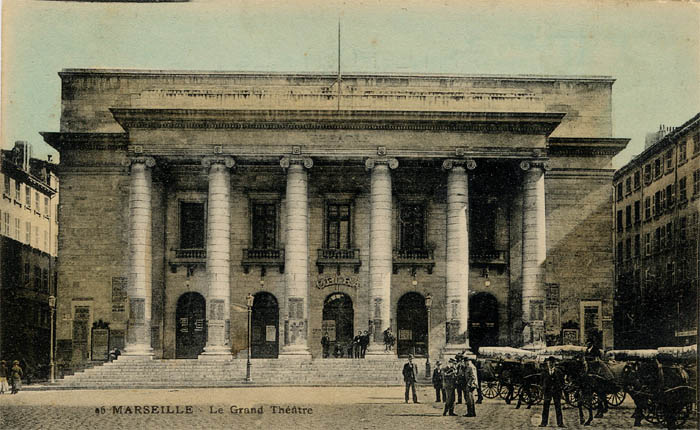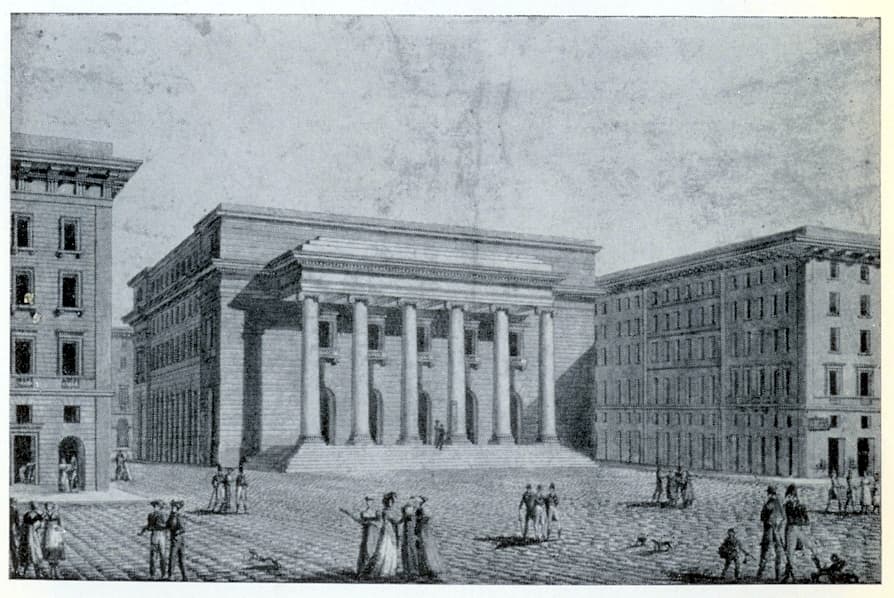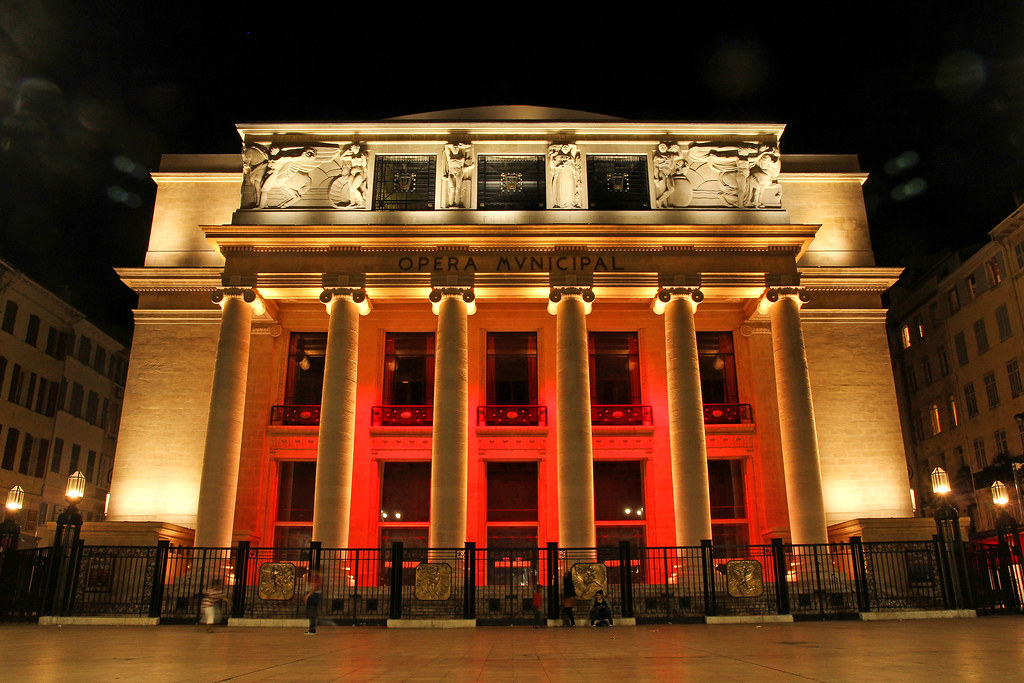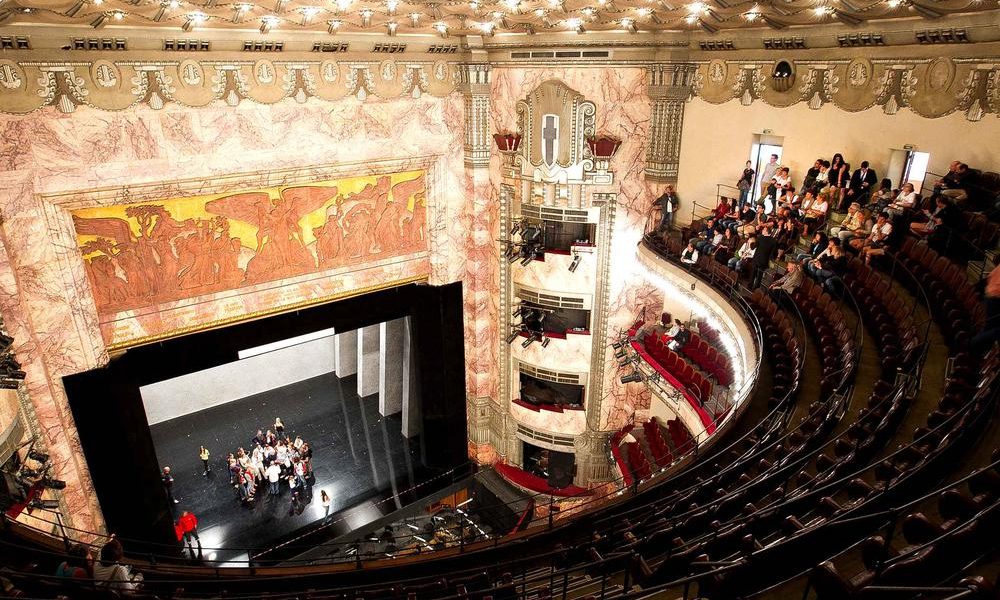In the heart of Marseille, where the sea whispers ancient secrets and the sun casts its golden embrace, stands a cultural cornerstone that has stood the test of time: the Opéra de Marseille. Beyond its opulent exterior lies a narrative as intricate and captivating as the melodies that echo within its walls.
From its modest origins to its present-day grandeur, this opera house embodies the soul of Marseille, weaving a tale of passion, resilience, and artistic brilliance. Join us on a journey through history as we unravel the rich tapestry of Marseille’s opera scene, a journey that resonates with the very essence of this vibrant city.
Early Years
The early years of the Opéra de Marseille reflect the city’s growing cultural aspirations and the emergence of opera as a significant art form in France. Here’s a closer look at the formative period of this historic institution:
- Salle Bauveau: In 1685, Marseille saw the establishment of its first permanent opera venue, the Salle Bauveau. Although modest in scale, this theater provided a space for regular opera performances, marking the beginning of Marseille’s association with the operatic arts;
- Growing Demand: As the popularity of opera grew throughout the 18th century, fueled by the flourishing cultural scene in major French cities, including Marseille, there arose a need for a more substantial and permanent opera house to accommodate larger audiences and grander productions;
- Construction of the Grand Théâtre: Responding to this demand, Marseille’s authorities commissioned the construction of a new opera house in the mid-18th century. The result was the Grand Théâtre de Marseille, designed by architect Michel-Robert Penchaud and inaugurated in 1787. This grand neoclassical theater became the centerpiece of Marseille’s cultural life;
- Early Performances: In its early years, the Grand Théâtre staged performances of operas, ballets, and other theatrical works, attracting audiences from Marseille’s diverse social strata. These performances featured both established masterpieces of the operatic repertoire and new works by contemporary composers, contributing to Marseille’s reputation as a vibrant cultural center;
- Cultural Significance: The establishment of the Grand Théâtre underscored Marseille’s growing cultural significance within France and its aspirations to rival the artistic prominence of cities like Paris and Lyon. The opera house became a symbol of civic pride and sophistication, reflecting Marseille’s evolving identity as a center of arts and culture.
Overall, the early years of the Opéra de Marseille were marked by the city’s embrace of opera as a cultural pursuit and the establishment of a permanent venue to showcase this art form. This period laid the foundation for the opera house’s subsequent growth and prominence in Marseille’s cultural landscape.
The Grand Theater

Constructed in 1787, the Grand Theater, later known as Hall Bauveau, became the epitome of opulence in Marseille. Post-Revolution, it hosted grand opera presentations, including notable works by Verdi and performances by renowned sopranos like Adelina Patti.
The construction of the Grand Théâtre de Marseille marked a significant milestone in the city’s cultural development, reflecting Marseille’s growing prominence as a cultural center in 18th-century France. Here’s an overview of the construction process and the architectural significance of this iconic opera house:
- Architectural Design: The Grand Théâtre was designed by the architect Michel-Robert Penchaud in the neoclassical style, which was popular during the late 18th century. Neoclassical architecture drew inspiration from the classical forms of ancient Greece and Rome, emphasizing symmetry, proportion, and grandeur;
- Location: The site chosen for the Grand Théâtre was strategically located in the heart of Marseille, near the city’s historic port and commercial center. This central location ensured easy access for audiences and enhanced the theater’s visibility and prestige;
- Construction Period: The construction of the Grand Théâtre began in the mid-18th century, reflecting Marseille’s growing prosperity and cultural ambitions. The project faced various challenges, including financial constraints and technical difficulties, but ultimately, the theater was completed and inaugurated in 1787;
- Architectural Features: The Grand Théâtre boasted impressive architectural features both inside and out. Its façade was adorned with grand columns, elaborate sculptures, and ornate decorations, showcasing the opulence and elegance characteristic of neoclassical design. Inside, the theater’s auditorium featured plush seating, exquisite decorative elements, and state-of-the-art acoustics, providing an immersive and visually stunning environment for opera performances;
- Cultural Impact: The completion of the Grand Théâtre affirmed Marseille’s status as a cultural hub and contributed to the city’s growing reputation as a center of arts and refinement. The theater became a focal point for elite society, attracting audiences from Marseille and beyond who sought to experience the finest opera and theatrical productions of the era;
- Legacy: The Grand Théâtre de Marseille remains an enduring symbol of Marseille’s cultural heritage and architectural legacy. Despite undergoing renovations and modifications over the centuries, the theater continues to serve as a vital cultural institution, hosting opera, ballet, and other performing arts events that enrich the cultural fabric of the city.
In summary, the construction of the Grand Théâtre de Marseille represents a pivotal moment in the city’s history, embodying Marseille’s aspirations for cultural excellence and artistic achievement during the 18th century.
Cultural Hub

The Marseille opera faced its greatest challenge in November 1919 when a devastating fire ravaged the 18th-century theater. Despite the destruction, the city’s spirit remained unbroken, leading to the birth of a new era in its operatic history. Here are some key aspects of its significance during this period:
- Artistic Excellence: The opera house attracted top talent, including renowned composers, conductors, singers, and dancers from across Europe. Performances of operas, ballets, and other theatrical works showcased the highest standards of artistic excellence, drawing audiences from Marseille and beyond;
- Social Gathering Place: The Opéra de Marseille was not just a venue for performances but also a social gathering place for the city’s elite. Attending the opera was a fashionable pastime for the bourgeoisie and aristocracy, providing an opportunity for networking, socializing, and displaying one’s status and refinement;
- Cultural Exchange: Marseille’s position as a major port city facilitated cultural exchange, and the opera house played a crucial role in this regard. It served as a platform for introducing new works and artistic trends from other European cities, contributing to Marseille’s cosmopolitan atmosphere and enriching its cultural landscape;
- Celebrations and Festivities: The opera house was often the centerpiece of grand celebrations and festivities in Marseille. Special performances were organized to commemorate important events such as royal visits, national holidays, and civic ceremonies, further cementing its status as a symbol of civic pride and identity;
- Educational and Outreach Initiatives: The opera house also undertook educational and outreach initiatives to engage with the wider community. Programs such as student matinees, guided tours, and workshops aimed to foster a deeper appreciation for opera and ballet among diverse audiences, including children, students, and marginalized communities;
Overall, the Opéra de Marseille during the 19th century served not only as a venue for artistic expression but also as a dynamic cultural institution that contributed to the intellectual, social, and civic life of Marseille, reflecting the city’s aspirations and aspirations for artistic excellence and cultural enrichment.
Renovations and Rebuilding

The late 20th-century restoration of the Opéra de Marseille was a significant endeavor aimed at preserving the historical and architectural integrity of the opera house while modernizing its facilities to meet contemporary standards. Here are some key aspects of this restoration effort:
- Historical Preservation: The restoration project prioritized the preservation of the opera house’s historic features, including its neoclassical facade, ornate interior decorations, and architectural details. Skilled craftsmen were employed to meticulously restore damaged or deteriorated elements, ensuring that the building retained its original character and charm;
- Structural Reinforcement: As with many historic buildings, the Opéra de Marseille required structural reinforcement to address age-related deterioration and ensure its long-term stability. Engineers conducted thorough assessments of the building’s structural integrity and implemented measures such as seismic retrofitting and reinforcement of load-bearing elements to enhance its resilience to seismic activity and other potential hazards;
- Technical Upgrades: To enhance the functionality and operational efficiency of the opera house, the restoration project included updates to its technical infrastructure. This may have involved the installation of modern heating, ventilation, and air conditioning (HVAC) systems, as well as upgrades to electrical and plumbing systems to meet contemporary building codes and safety standards;
- Accessibility Improvements: Accessibility was a key consideration in the late 20th-century restoration, with efforts made to improve access for patrons with disabilities. This may have included the installation of ramps, elevators, and accessible seating areas to ensure that individuals with mobility impairments could fully enjoy performances at the opera house;
- Aesthetic Enhancements: While the restoration aimed to preserve the historical character of the opera house, it may have also involved aesthetic enhancements to refresh its appearance and enhance the audience experience. This could include repainting of interior spaces, refurbishment of decorative elements, and upgrades to lighting and acoustics to create a more immersive and visually appealing atmosphere for performances.
Overall, the late 20th-century restoration of the Opéra de Marseille was a comprehensive effort that combined historical preservation with modernization to ensure the continued vitality and relevance of this iconic cultural institution. By respecting its heritage while embracing contemporary advancements, the restoration project helped to safeguard the opera house for future generations to enjoy.
Challenges and Resilience

The Opéra de Marseille has faced numerous challenges throughout its history, but its resilience has allowed it to overcome adversity and maintain its status as a cultural landmark. Here are some of the challenges the opera house has encountered and how it has demonstrated resilience:
- Financial Struggles: Like many arts organizations, the Opéra de Marseille has faced financial challenges, including fluctuating funding levels, rising operating costs, and economic downturns. Despite these obstacles, the opera house has implemented cost-saving measures, pursued fundraising efforts, and sought support from government subsidies and private donors to ensure its financial stability;
- Changing Artistic Trends: The opera industry has evolved over time, with changing tastes and preferences among audiences presenting a challenge for traditional opera houses. To remain relevant, the Opéra de Marseille has adapted its programming to include a diverse range of productions, including classical operas, contemporary works, ballets, and other performing arts, appealing to a broad audience base;
- Infrastructure Maintenance: Maintaining a historic building like the Opéra de Marseille requires ongoing upkeep and renovation to address aging infrastructure, structural issues, and compliance with building codes. Despite the logistical and financial hurdles of maintaining such a facility, the opera house has undertaken periodic renovations and restoration projects to preserve its architectural heritage and ensure a safe and welcoming environment for patrons and performers;
- Competition and Collaboration: In a competitive cultural landscape, the Opéra de Marseille has faced competition from other arts organizations and entertainment venues vying for audiences’ attention. However, the opera house has also forged collaborations with local and international partners, including artists, musicians, and cultural institutions, to enhance its programming, expand its reach, and foster a vibrant arts community in Marseille;
- External Factors: External factors such as political instability, social unrest, and public health crises can impact the operations of cultural institutions like the Opéra de Marseille. Despite these challenges, the opera house has demonstrated resilience by adapting its operations, implementing safety protocols, and finding creative solutions to continue serving its mission of enriching the cultural life of the community.
Through its ability to navigate challenges, adapt to changing circumstances, and innovate in the face of adversity, the Opéra de Marseille has proven itself to be a resilient institution dedicated to preserving and promoting the arts for generations to come.
Conclusion
As the final curtain falls and the echoes of applause fade into the night, the Opéra de Marseille stands as a timeless symbol of artistic resilience and cultural vitality. Through centuries of triumphs and tribulations, it has remained a beacon of enlightenment, captivating audiences with its melodious strains and captivating performances.
As we bid adieu to this hallowed stage, let us carry with us the echoes of its melodies and the memories of its magic, knowing that the spirit of Marseille’s opera house will continue to inspire generations to come. For in the heart of this bustling port city, amidst the labyrinthine alleys and bustling markets, the Opéra de Marseille remains a sanctuary of art, a testament to the enduring power of music to unite, uplift, and transcend.